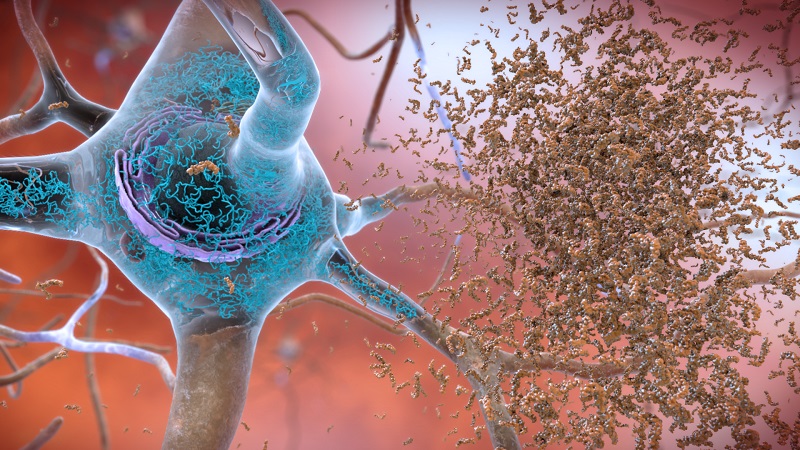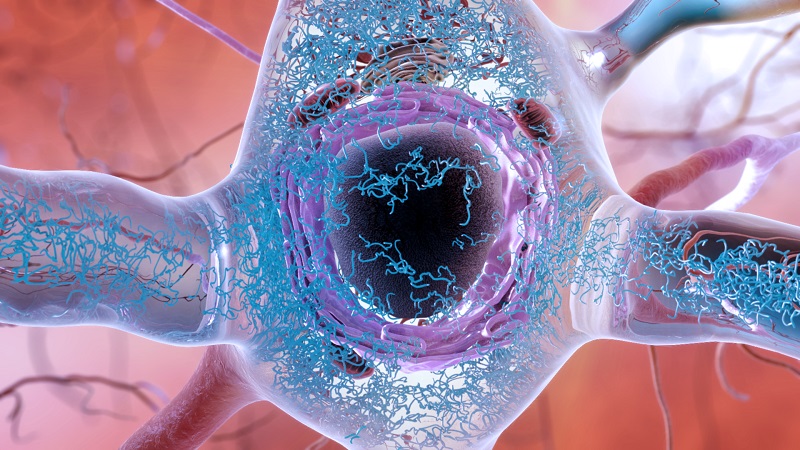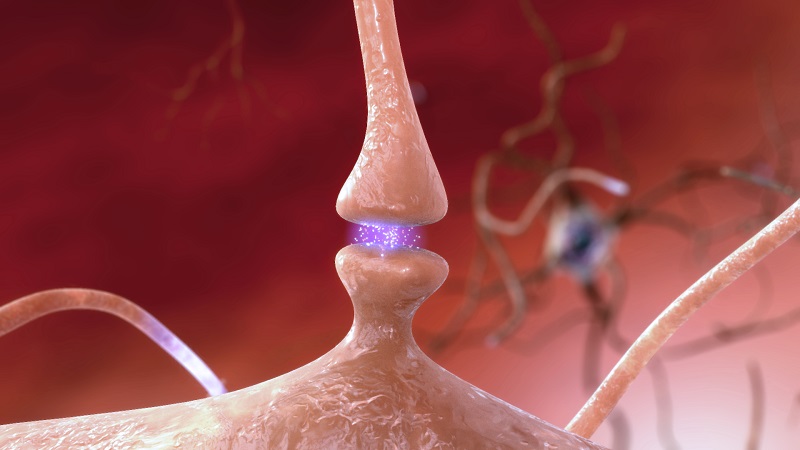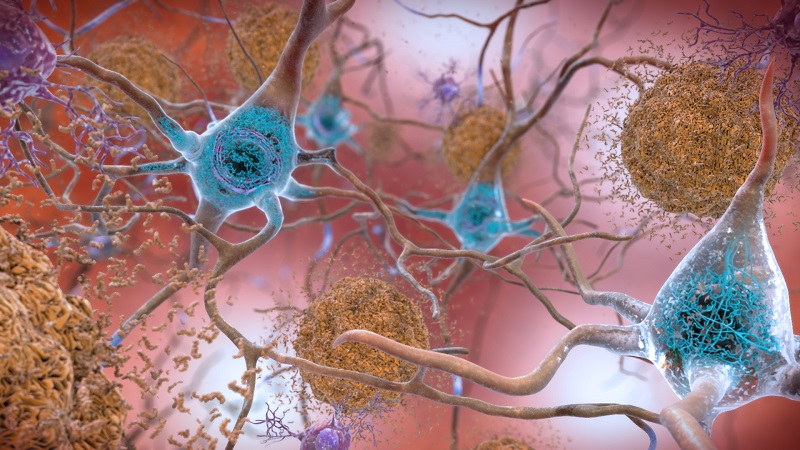Researchers Report These Drugs Could Prevent Alzheimer’s Disease
Summary: Can these compounds prevent Alzheimer’s while slowing down the aging process? Rapamycin is the leading candidate, as it has been shown to prevent Alzheimer’s in mice. [This article first appeared on the LongevityFacts website. Author: Brady Hartman. ]
FDA-approved drugs called geroprotectors may be a simple and inexpensive way to prevent Alzheimer’s disease say an international team of researchers in a review published late last month.
Led by Professor Arif Tasleem Jan, the team from Yeungnam University in South Korea presented a thorough review of potential Alzheimer’s treatments and published their results in the journal Frontiers in Aging Neuroscience on November 26. The researchers suggested the use of geroprotective drugs such as rapamycin, metformin, resveratrol and NAD boosters as a way to ward off Alzheimer’s disease. This review adds to previous experiments which show that rapamycin prevents dementia in mice.
Can we have our anti-aging cake and prevent Alzheimer’s too?

The review by Professor Jan & Company comes at an opportune time as Big Pharma, and the Federal Government are increasingly focused on developing new compounds that prevent the disease. However, according to an opinion piece by Alzheimer’s researchers at New York’s Mount Sinai, perhaps Big Pharma’s obsession with treating Alzheimer’s by clearing out amyloid beta plaques is wrongheaded.
While Jan & Co acknowledge the importance of maintaining focus on the removal of amyloid beta and damaged tau proteins, they suggest alternative approaches to cure or prevent Alzheimer’s disease, including reducing free radical damage and increasing the cellular housekeeping process known as autophagy.
Jan & Co point out that we already have FDA-approved medications, called geroprotectors, shown to prevent Alzheimer’s disease in mice. As an added benefit, these geroprotectors also retard the aging in the rest of the body. At least in mice, that is. In other words, these drugs significantly delay aging and Alzheimer’s disease simultaneously, in a two-for-one deal. Perhaps they will do the same for humans?
The Processes Underlying Alzheimer’s
In part, Alzheimer’s and other neurodegenerative diseases are caused by a build-up of amyloid beta plaques and tau protein tangles in the brain – a phenomenon called cellular garbaging, a term coined by the highly regarded geroscientist Claudio Franceschi.
Leading dementia advocacy organizations and researchers blame the breakdown of autophagy in Alzheimer’s patients as one of the causes of the loss of function and cell death in the brain.

Peer into a microscope inside the brain cells of Alzheimer’s patients, and you’ll see tau protein tangles. Also called neurofibrillary tangles (NFT), these are twisted fibers of a protein called tau. Aubrey de Grey of the SENS foundation calls them ‘intracellular aggregates,’ and to a dementia patient, they are a significant source of trouble. In Alzheimer’s patients, the twisted tangles of tau protein constrict the flow of nutrients and starve the brain cells. NFT’s form because of a breakdown in the cellular housekeeping service known as autophagy.
Just outside the cells, you’ll probably see amyloid beta plaques, a type of extracellular garbage that also plays a substantial role in dementia and is the prime target of Alzheimer’s researchers.

However, these plaques of sticky amyloid beta proteins that abnormally build-up outside of brain cells are not necessarily the prime suspect. All of our sensations, feelings, movements, thoughts, and memories are the result of signals that pass through billions of neurons, a type of nerve cells. These neurons use signaling compounds to continually communicate with one another across the synapses to neighboring neurons.
Researchers feel that the most damaging form of amyloid beta may be groups of a few pieces that block these nerve synapses rather than the large plaques. These small chunks may block signaling at the synapses and trigger chronic inflammation.
Though most individuals develop some amyloid beta plaques and tau protein tangles as they age, those with Alzheimer’s tend to generate far more.
Is Alzheimer’s Another Form of Aging?
Professor Jan & colleagues gave an overview of the pathology of Alzheimer’s Disease (AD). The authors acknowledged that amyloid beta and damaged tau proteins are “well-recognized hallmarks of AD” and play a leading role in the loss of function and cell death in the brains of Alzheimer’s patients.
Additionally, Jan & Co provide a description of the underlying processes in Alzheimer’s Disease, citing many of the hallmarks of aging that occur throughout the body. In other words, the researchers described AD just like any other aging process that happens in the rest of the body. For example, the authors describe characteristics of Alzheimer’s using terms such as ‘mitochondrial dysfunction,’ ‘altered mitochondrial DNA,’ ‘reduction in autophagy’ and ‘increased ROS production which damages proteins, lipids, and nucleic acids’
Professor Jan & Co hit on three of the hallmarks of aging, namely ‘mitochondrial dysfunction,’ and ‘altered intercellular communication’ and ‘loss of proteostasis.’ These three forms of macromolecular damage underlie most of the process of aging both in the brain and elsewhere throughout the body.

The High Cost of Free Radicals
Free radicals cause oxidative stress in our cells and the mitochondria inside them. Some oxidative stress is useful in that it increases autophagy. However, too much oxidative stress leads to damaged cellular components, called macromolecular damage. As Professor Jan & colleagues say,
“Oxidative stress due to reactive oxygen species (ROS), being a major player in neurodegeneration strategies, are currently being devised to combat its emergence at mitochondria”
The authors list several untested compounds currently being studied to counter this oxidative stress, including
“ferulic acid (FA), epigallocatechin-3-gallate, and nano formulation of naturally occurring curcumin were found exerting strong antioxidant, anti-inflammatory and amyloid disintegration properties.”
Free radical damage significantly harms the mitochondria, an organelle that has a hard time getting enough anti-oxidants. To combat this problem, the authors also suggest MitoQ, a promising anti-oxidant supplement as a way to partially prevent Alzheimer’s symptoms, proposing
“Similarly, accumulation of drugs such as MitoQ inside mitochondria increases its potential to neutralize free radicals several 100-folds than that attributed by natural antioxidant”
Bottom Line: While these compounds may prevent Alzheimer’s disease in a test tube and lab animals, it remains to be seen how well they work in humans.
Mitochondrial Damage
The brain is one of the body’s biggest consumers of energy and relies on mitochondria to supply the power. And when the mitochondrial performance takes a hit, it exacerbates the symptoms of Alzheimer’s disease. As Jan & Co put it,
“Considering the high energy demand of neurons, a role of mitochondrial oxidative stress leading to energy imbalance appears to have a considerable effect on neurodegeneration.“
In the processes underlying Alzheimer’s Disease, the authors fingered “altered mitochondrial DNA “ (mutations in mitochondrial DNA) and otherwise dysfunctional mitochondria caused by increased free radical damage. As Jan & Co say,
“An increase in the oxidative burden of mitochondria causes an increase in cell death of neurons.”
Decline in Autophagy
Brain cells continually produce debris and rely on a housekeeping service called autophagy to take out the trash, such as amyloid beta (Aβ) and damaged tau proteins. As Jan & Co put it, “the critical role of autophagy in the removal of Aβ aggregates” declines in patients with Alzheimer’s Disease. This reduction in housekeeping leads to a build-up of cellular junk which exacerbates the symptoms.
Jan & Co say that “autophagy inducers seems a good therapeutic approach.” Because they “work by preventing the accumulation of Aβ plaques and tau tangles.” The authors recommend well-known autophagy inducers such as rapamycin, metformin, resveratrol and its analogs, as well as NAD boosting compounds, such as “nicotinamide.”
Of the suggested compounds, rapamycin has the most substantial experimental track record, and seems to prevent the build-up of amyloid beta plaques and damaged tau proteins in mice.

Rapamycin Shown to Prevent Alzheimer’s
Researchers show that rapamycin therapy prevents Alzheimer’s in mice. Perhaps it can do the same for us too?
Prof Jan & Co are not the first ones to propose using autophagy inducers to prevent Alzheimer’s. In 2015, Professor Arlan Richardson, Ph.D. and colleagues published a review showing that rapamycin therapy prevents Alzheimer’s disease in mice, and suggested it could do the same for humans.
Richardson is a well-regarded geroscientist from the Department of Geriatric Medicine and University of Oklahoma Health Science Center and featured prominently in an earlier article on macromolecular damage. In their review, Richardson and colleagues state,
“Rapamycin prevents the deficit in cognition observed in Alzheimer’s transgenic mice.” adding “Rapamycin has been shown to prevent (and possibly restore in some cases) the deficit in memory observed in the mouse model of Alzheimer’s disease (AD-Tg) as well as reduce Aβ and tau aggregation, restore cerebral blood flow and vascularization, and reduce microglia activation.”
Richardson & Co explain that rapamycin prevents Alzheimer’s by enhancing autophagy and hindering the build-up of amyloid beta and damaged tau proteins. As Richardson and colleagues put it,
“It [rapamycin] is neuroprotective in neurodegenerative diseases and its primary action is thought to be via enhancement of autophagy, a biological process that not only facilitates the clearance of mutant proteins but also significantly reduces the build-up of toxic protein aggregates such as Aβ. “
Can We Prevent Alzheimer’s Disease?
There is no FDA-approved drug to prevent Alzheimer’s disease.
Jan & Co suggest that many well-known lifespan-extending drugs – such as rapamycin, metformin, resveratrol, and nicotinamide – may prevent Alzheimer’s disease. Out of these compounds, rapamycin has the most significant experimental record, and Richardson reports that prolonged rapamycin therapy nearly entirely prevents Alzheimer’s in mice.
What works well in mice, often doesn’t work well in humans. Unfortunately, there hasn’t been a well-powered clinical trial to see if these geroprotectors prevent Alzheimer’s disease in humans.
Unfortunately, Big Pharma won’t touch these drugs because they are off patent. Instead, the pharmaceutical industry exclusively focuses on developing new molecules that treat or prevent Alzheimer’s disease. New compounds are patentable and quite lucrative, especially those for chronic conditions where the patient has to take the medication for the rest of his life.
However, private research organizations are testing these compounds when they can raise enough money through donations. For example, Nir Barzilai is spearheading the five-year ‘Treating Aging with Metformin in the Elderly’ (TAME) trial, to test the capability of metformin to ward off the ravages of aging. Expected to cost $65 million, the American Federation for Aging Research (AFAR) has raised about half the money so far and is still accepting donations to conduct the TAME trial. Other researchers are testing the lifespan-extension effects – but not necessarily Alzheimer’s disease-modifying effects – of various drugs in small groups of patients, including trials of rapamycin, resveratrol, and NAD-boosting compounds.
Additional Reading on Alzheimer’s
Part 1 of this series: Scientists propose novel treatments to cure Alzheimer’s.
Part 2 of this series: Scientists propose precision treatments for Alzheimer’s.
Scientists discover key mechanism in Alzheimer’s disease.
Researchers discover diabetes drugs as potential Alzheimer’s treatment.
Show Us Some Love
Share this post on social media and help us spread the word– It only takes one click on any of the social media links on this page.
Follow us on social media – Google+ | Reddit
Sign up for our email list – We use your email to notify you of new articles. We will not share your email address or send you spam. You can cancel at any time.
Tell us what you think – Scroll down to enter your comments below.
References
Cover photo: Wildpixel / Getty Images.
Jan, Arif Tasleem, et al. “Perspective Insights into Disease Progression, Diagnostics, and Therapeutic Approaches in Alzheimer’s Disease: A Judicious Update.” Frontiers in Aging Neuroscience 9 (2017): 356. PMC. Web. 26 Nov. 2017. Link.
Arlan Richardson, Veronica Galvan, Ai-Ling Lin, Salvatore Oddo, “How longevity research can lead to therapies for Alzheimer’s disease: The rapamycin story,” In Experimental Gerontology, Vol. 68, 2015, p51-58, ISSN 0531-5565, http://doi.org/10.1016/j.exger.2014.12.002. Alternate Link.
Disclaimer
Diagnosis, Treatment, and Advice: This article is intended for educational and informational purposes only and is not a substitute for qualified, professional medical advice. The information and opinions provided herein should not be used during any medical emergency or for the diagnosis or treatment of any medical condition. All drugs and supplements listed in this article are considered experimental and pre-experimental therapies to prevent Alzheimer’s disease. Experimental therapies carry a much higher risk than FDA-approved ones. Consult a licensed and qualified physician for the diagnosis and treatment of any and all medical conditions. Call 911, or an equivalent emergency hotline number, for all medical emergencies. As well, consult a licensed, qualified physician before changing your diet, supplement or exercise programs. Endorsements, Photos, & External Links: This article is not intended to endorse organizations, companies, or their products. Links to external websites, mention or depiction of company names or brands, are intended for illustration only and do not constitute endorsements.
2 Replies to “Researchers Report These Drugs Could Prevent Alzheimer’s Disease”
Comments are closed.